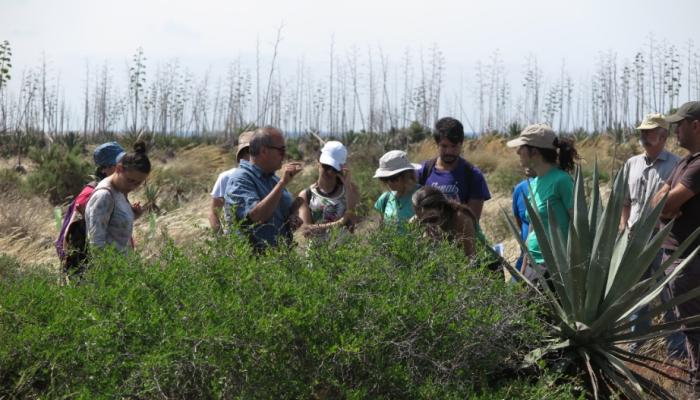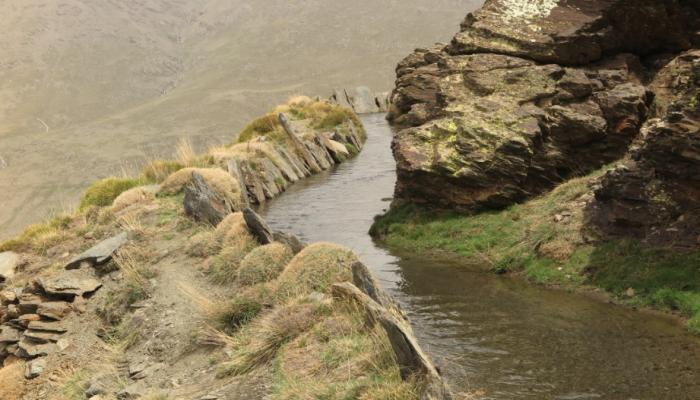
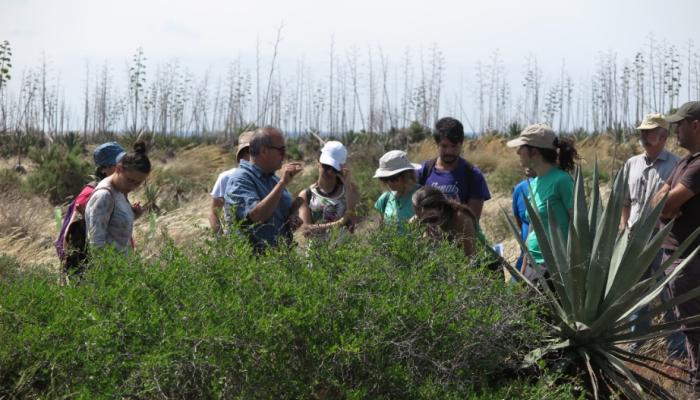
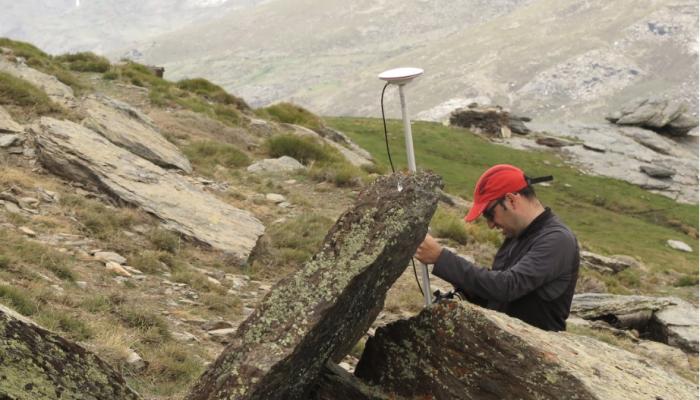
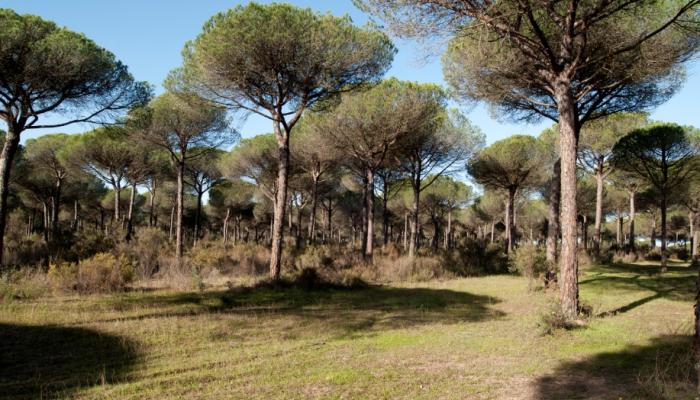
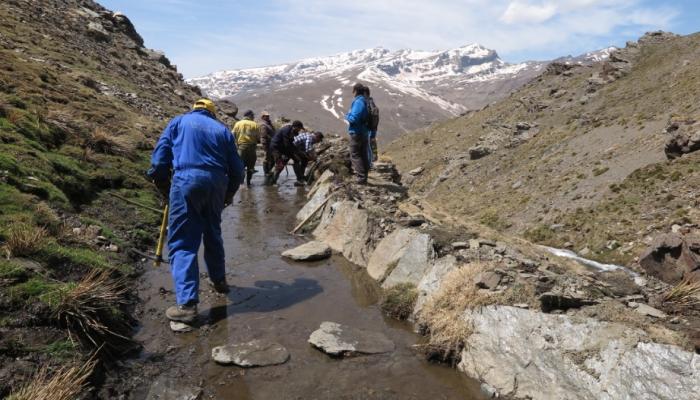
Protected Natural Areas (PNAs) provide a wide range of ecosystem goods and services, including soil protection, water regulation, climate regulation, desertification prevention, maintenance of essential ecological functions, provision of recreational opportunities, and the sustainable supply of natural products such as pine cones, timber, honey, and game.
Climate change represents one of the main challenges facing these PNAs, as their resources, goods, and services may be seriously compromised. The LIFE Adaptamed project, through adaptive habitat management measures designed to enhance resilience to climate change and other disturbances, has generated data, experiences, and practical tools for managers, landowners, and stakeholders involved in the conservation and sustainable use of these areas.
In doing so, the project also strengthens their capacity to continue providing ecosystem goods and services, while maintaining a strong social and public service dimension.
The LIFE Adaptamed project implements adaptive management measures to protect ecosystem services in three Protected Natural Areas—Cabo de Gata, Doñana, and Sierra Nevada—in response to climate change. These measures involve habitat management actions designed to enhance the resistance and resilience of ecosystems to the effects of climate change and other disturbances, thereby improving the capacity of these areas to continue providing ecosystem goods and services.
This approach is based on an iterative management process, aimed at dynamically conserving ecosystems by adjusting actions and practices according to the results obtained through continuous monitoring.
In this regard, the three pilot areas selected are emblematic and representative examples of Mediterranean ecosystems:
- The Cabo de Gata–Níjar Natural Park is home to arid and semi-arid coastal ecosystems that support biological communities unique in Europe.
- The Doñana National Park is one of Europe’s most important wetlands and an outstanding example of coastal forest and Mediterranean scrubland.
- The Sierra Nevada National Park encompasses mountain ecosystems with a wide range of habitats, featuring high levels of diversity and endemism.
In addition, both Doñana and Sierra Nevada are included in the IUCN Green List of Protected Areas.
Significant changes in temperature and precipitation patterns have been observed across all three protected areas, along with alterations in snowfall regimes, river flows, and groundwater dynamics. Longer dry periods and rising temperatures indicate an increasing frequency and intensity of droughts.
Other climate- and ecosystem-related impacts include changes in biodiversity, such as shifts in species distribution (colonization by new species, extinction of others, and altitudinal migrations), greater incidence of forest pests, wildfires, and forest decline, the arrival of exotic and invasive species, and changes in the timing of key biological processes—such as butterfly emergence, flowering, and the migration of certain species.
At this juncture, the LIFE Adaptamed project takes a step forward in the monitoring and management of protected areas, aiming to test adaptive management measures that can be applied within these areas or extrapolated to other territories to address the effects of global change.
Each of these areas follows the same adaptive management implementation plan:
- Identification of management objectives, specification and implementation of different management alternatives
- Evaluation of results
- Decision-making and adjustment of management practices based on the results obtained
In addition, the project provides a comprehensive set of data, experiences, and tools that will serve as a reference for managers, landowners, and stakeholders in addressing the challenges posed by climate change. It represents an important step toward the long-term consolidation of the Network of Climate Change Observatories in Andalusia.
The objectives outlined below are based on the experience gained during the years of project implementation, during which the three observatories have developed and maintained independent monitoring programs.
The main objective of the LIFE Adaptamed project is to protect the ecosystem services of three unique Protected Natural Areas—Cabo de Gata, Doñana, and Sierra Nevada—from the effects of climate change, through the application of adaptive management measures aimed at strengthening habitats in the medium and long term and thereby increasing the resilience of these key ecosystems.
The project’s actions are implemented at a local scale within these areas, but their impact extends regionally, by generating valuable knowledge for climate change adaptation and developing new conservation models based on the protection of ecosystem services; and internationally, by promoting knowledge transfer through the communication and dissemination of results via institutions such as the IUCN, the European Commission, and the Ministry for Ecological Transition, among others.
In addition, several actions are designed to test and disseminate innovative tools and approaches with strong potential to contribute to the project’s objectives, while others seek to increase knowledge and awareness among specific social groups and the general public about climate change, and more specifically, about adaptation strategies.
In any case, the project’s objectives are structured around three fundamental approaches:
- Demonstrative: referring to the evaluation and monitoring of the different procedures implemented, as well as the communication and dissemination of the results obtained so that similar initiatives can be designed and implemented in other locations
- Pilot: referring to the use of remote sensing and radiometry systems to monitor and evaluate the effectiveness of climate change adaptation measures applied to the provision of ecosystem services, as well as the creation of a specific information system through the integration of a network of climate change observatories in different geographical locations with specific functionalities
- Best practices: related to the ecosystem approach, the recovery of community functionality, the integration of cultural, social, and economic values into adaptive management, and the participatory approach of the project
In this regard, and based on the experiences and data gathered from the three observatories established by the project in Cabo de Gata, Doñana, and Sierra Nevada, the objectives are to:
Consolidate the monitoring programmes initiated in these protected areas, creating synergies and defining shared objectives within a common conceptual framework.
Launch new adaptive management projects in these and other selected areas, applying the knowledge gained to ecosystem management and evaluating the effectiveness of the management measures implemented.
- Promote the project’s social engagement, the dissemination of knowledge, and active citizen participation.
To achieve the proposed objectives, the project is developing a series of actions of different types:
Preparatory actions – These provide the baseline information and results necessary for the development of subsequent activities, and include:
Compiling information to support the design of actions that enhance ecosystem adaptability to climate change.
Conducting pilot studies on traditional agricultural and livestock systems.
Identifying ecological and hydrological factors to select optimal restoration areas in high mountain zones, as well as the monitoring and assessment of potential pest outbreaks linked to climate change effects.
Assessing the condition of affected ecosystem services at both the landscape and field scales.
Central or main actions – These correspond to the implementation of adaptive management measures, including pilot interventions addressing specific climate change–related challenges that affect the provision of ecosystem services, such as:
Adaptive management of reforested pine forests, promoting heterogeneous stand structures with multiple age classes and diverse biological communities maintained at appropriate densities.
Soil conservation and sustainable agricultural management, used as tools for protecting ecosystem services and enhancing adaptation to climate change in semi-arid ecosystems.
Restoration of ecological functions in key ecosystems identified as of interest or priority under Annex I of the EU Habitats Directive.
The following experimental actions are being carried out:
Cabo de Gata:
Soil conservation and agricultural management in semi-arid ecosystems, including the reconstruction of balates (traditional dry-stone terraces) for agricultural soil retention and pasture cultivation (plowing, fallowing, sowing, and grazing) following traditional techniques.
Management of pine–esparto grasslands through silvicultural techniques aimed at biodiversity restoration.
Enhancement of the resilience and service-provision capacity of jujube groves, including the planting of jujube trees and the establishment of a groundwater and surface-water monitoring network as an early-warning indicator.
Experimental removal of invasive, competing species from jujube groves, such as Agave spp.
Doñana:
Management of pine forests (Pinus pinea and/or Pinus pinaster), through silvicultural treatments such as thinning and removal of residual biomass from plots.
Regeneration of Mediterranean forests through the sowing and planting of key species, using various seeding techniques for species such as cork oak (Quercus suber), wild olive (Olea europaea var. sylvestris), and mastic (Pistacia lentiscus).
Installation of protective fencing to mitigate the impact of herbivores on plant regeneration, and placement of “biodiversity boxes” to provide shelter for insectivorous birds and bats, thereby helping to control pest populations.
Sierra Nevada:
Management of pine forests with selective silvicultural treatments on different species of pine tres
Silvicultural management of holm oak and oak forests (Quercus spp.), with selective pruning and thinning
Installation of fencing to mitigate the effects of herbivores on plant regeneration
Maintenance and enhancement of traditional irrigation ditches, and restoration of high-mountain scrublands through the sowing and planting of junipers (Juniperus communis, Juniperus sabina) and barberries (Berberis hispanica)
A comprehensive information system is also being developed to monitor climate change in Andalusia, with the following components:
Catalog: enables users to search for and access all information through descriptive metadata files.
Data repository: provides data storage and management across the different nodes of the selected Protected Natural Areas and within the Andalusian Environmental Information Network (REDIAM).
Services: offer access to data, both via the web and through other applications, using map viewers that allow spatial and/or alphanumeric information to be consulted in accordance with the Open Geospatial Consortium’s Web Map Service (WMS) protocol.
Monitoring – Aimed at quantitatively and qualitatively assessing the impact of the main actions, particularly those related to the adaptability and protection of the ecosystems involved and their ecosystem services. Each monitoring activity is supported by a set of indicators that enable the evaluation of its impact throughout the project’s implementation.
Dissemination and communication – Aimed at sharing the project’s results and developing tools to support other managers in replicating and testing similar actions in comparable contexts.
It also seeks to communicate the project’s progress and key concepts to society at large, and to facilitate effective management at the technical, scientific, and financial levels, as well as the development of a follow-up plan to ensure the project’s long-term sustainability.
In any case, governance, education, and citizen science initiatives are elements that are inextricably linked to an effective strategy for adapting to the effects of climate change.
For the first time, specific actions are being implemented to promote natural regeneration processes in some of the Mediterranean ecosystems most vulnerable to climate change, such as those selected in Sierra Nevada, Doñana and the Cabo de Gata-Níjar Natural Park.
These are forestry actions based on comparative analysis and monitoring to evaluate the effects of the applied treatments. The objective is to increase the resilience of forest stands to the effects of global change and to ensure the maintenance of ecological functions, which ultimately translate into the continued provision of ecosystem services.
Protected areas, which supply essential goods and services to society and local communities, respond differently to climate change through the implementation of diverse adaptation strategies.:
- Protecting and supporting the recovery of ecosystems with a high capacity for carbon storage, such as forests and peatlands.
- Maintaining their ability to buffer extreme events—including floods, storms, droughts, and sea-level rise.
- Maintaining or restoring ecological functions that sustain the provision of ecosystem services benefiting society.
- Developing long-term monitoring systems to track the effects of climate change and disseminating the results.
- Implementing management actions that enhance adaptive capacity in key ecosystems, thereby supporting the continued delivery of environmental goods and services.
The balance of these protected areas is at risk due to their exposure and vulnerability to global climate change, combined with an insufficient state of conservation. Therefore, the conservation and natural regeneration of these highly valuable protected natural areas, through the application of adaptive management techniques and systems, will enable the recovery and/or maintenance of measurable environmental services of both ecological and social importance—such as soil retention, carbon sequestration, pollination, pasture production, thermal and water regulation, fire prevention, recreational and tourism use, and resilience to drought.
For this reason, it is essential to anticipate and detect early signs of global change in these vulnerable areas, so that we can respond proactively and propose forward-looking solutions to a challenge that, in Europe, particularly affects the Mediterranean region.
In this regard, the diversity of scenarios encompassed by the LIFE Adaptamed project makes it possible to comparatively assess the situation across three representative protected natural areas of the southern Mediterranean. This, in turn, facilitates the transferability of results and experiences to other regions, enabling the application of management measures that have proven effective in strengthening similar ecosystems.
The coordination, as the main beneficiary of the project, corresponds to the Ministry of Agriculture, Livestock, Fisheries and Sustainable Development of the Junta de Andalucía, with extensive experience in the coordination of Life projects, which has been in charge of the implementation of the bulk of the central actions, including the development of the geographic information system that supports the significant volume of information that is being generated.
Specifically, LIFE Adaptamed’s activities are coordinated by the General Directorate for the Management of the Natural Environment and Protected Areas, in collaboration with the Andalusian Environmental Information Network (REDIAM), the Natural Areas of Doñana and Sierra Nevada, and the Cabo de Gata–Níjar Natural Park.
The target groups of the project are diverse. In addition to the local population, they include livestock farmers, land managers, irrigation community members in Sierra Nevada, representatives of the participatory bodies of the protected areas involved, as well as the tourism sector, the private business sector, and managers of protected natural areas and other sites of ecological interest.
The associated beneficiary partners are::
- Environment and Water Agency of Andalusia, attached to the Ministry of Agriculture, Livestock, Fisheries and Sustainable Development, which plays a cross-cutting role in the project—ranging from technical and financial coordination to the implementation of field actions, the evaluation of their effectiveness, and the drafting of forestry projects.
- Spanish National Research Council (CSIC), through the Doñana Biological Reserve, which provides scientific support for the actions carried out in the Doñana Natural Area, from the design of activities to field monitoring.
- University of Almería, through the Andalusian Centre for the Assessment and Monitoring of Global Change (CAESCG), which provides scientific support for all project actions undertaken in the Cabo de Gata–Níjar Natural Park, as well as landscape-scale monitoring of the project’s core activities using drones and satellite-based remote sensors.
- University of Granada, through the Andalusian Environment Centre (CEAMA), which provides scientific support for the implementation and monitoring of management actions in the Sierra Nevada National and Natural Parks, and coordinates all scientific activity arising from the project.
- Parque de las Ciencias de Andalucía, based in Granada, responsible for public dissemination, including the development of a travelling micro-exhibition and the organization of various scientific and technical meetings.
- International Union for Conservation of Nature (IUCN), participating through its Centre for Mediterranean Cooperation, a reference institution in the conservation of the Mediterranean basin, responsible for leading the project’s communication and dissemination activities, as well as for enhancing governance and promoting local dissemination
At the private-sector level, a single partner is involved in the project — Aguas de Font Vella y Lanjarón, S.A., a company belonging to the Aguas Danone Group, which is committed to the project’s development and acts as a co-financier.
The project has a strongly demonstrative character, and one of its main objectives is to provide criteria, knowledge, experiences, and tools for the protection of ecosystem services, aimed at managers, landowners, and other stakeholders. Several actions are designed to increase the understanding and awareness of these groups—and of the general public—regarding climate change and, in particular, adaptation strategies.
It also has a distinct pilot dimension, as it implements innovative techniques and methodologies, such as remote sensing and telemetry for the monitoring and evaluation of adaptation measures, as well as the integration of the information generated into a Climate Change Monitoring System for Andalusia.
The project focuses on three key territories for biodiversity in both Andalusia and Europe. The diversity of habitats, the abundance of endemic species, and the unique ecological characteristics they host make these sites ideal environments for analysing the impacts of climate change and testing adaptation measures.
Thus, the selected natural areas provide a valuable opportunity to analyse the environmental challenges and impacts associated with climate change that are addressed by the project:
- Cabo de Gata is located in one of the most arid regions of the Mediterranean. Its relevance in the context of climate change lies in the fact that its ecosystems—already characterized by limited water availability—are among the first to experience the impacts of a warming climate.
- Doñana is Europe’s most important wetland, renowned for its exceptional biodiversity. Its forested areas are as significant as its wetlands, due to their capacity to provide ecosystem services and their ecological connectivity with wetland systems.
- Sierra Nevada encompasses mountain systems with a wide range of environmental conditions and steep ecological gradients within relatively small areas, making it an ideal site for evaluating the effects of climate change on biodiversity distribution and ecosystem functioning.
Another key component of the project is the development and dissemination of tools that enable managers and other stakeholders to address the risks of ecosystem service loss caused by climate change in other comparable Mediterranean areas, thereby reinforcing its strongly demonstrative nature.
The expected benefits arising from the project’s implementation result from the following:
- Improvement of the structure and functioning of natural habitats that have been altered by human activity and are threatened by climate change. The results are expected to include an increase in seed production within oak (Quercus spp.) formations and other woody shrub species (e.g., wild olive, mastic, juniper, and mountain juniper). Genetic diversity and ecological interactions will also be restored, leading to an overall enhancement of ecosystem services.
- Enhancement of soil retention capacity and increase in the biological diversity of traditional crops in semi-arid environments, where land abandonment often results in soil erosion and nutrient loss.
- Increase in biodiversity and improvement of ecological functions in reforested pine stands, promoting their transformation into mixed forests that are more resilient and better adapted to climate change. This will reduce the risk of decline in these formations and safeguard the ecosystem services they provide.
The protection of the ecosystem services involved in each selected protected natural area will occur as a result of the implementation of some particular management measures, such as:
- planting and planting of cork oaks, wild olive trees, mastic trees, barberries, junipers, junipers, junipers, kermes oak, jujubes, black hawthorns, capers and Scots pines (Pinus sylvestris subsp. nevadensis)
- reduction of the area occupied by henequen agave (Agave fourcroydes) and sisal (Agave sisalana), invasive species in Cabo de Gata
- improvement of the operation in two traditional irrigation ditches for the rescue of holm oak and oak groves in Sierra Nevada.
- thinning in reforestation pine forests, mainly in Doñana and Sierra Nevada
- cork oak treatments as a preventive measure against the pathogenic fungus Phytopthora cinnamon
- Installation of biodiversity boxes for birds and bats
- reconstruction of balates and implementation of traditional tillage and grazing techniques in areas of pre-desert scrub of Cabo de Gata
- Preparation and dissemination of manuals of good practices for the adaptive management of shrublands, reforestation pine forests, pre-desert shrublands, mountain forests and cork oak pests
- development of the computer platform and climate change information system in Andalusia
- development of dissemination and participation activities (communication plan, workshops, environmental volunteering actions, didactic units for educators, symposia and technical follow-up meetings, travelling exhibitions,...)
Although the project is still ongoing, LIFE Adaptamed contributes directly to the development of Andalusia’s adaptive strategy to climate change, through the implementation of the proposed adaptive management actions and the operation of an information network connecting all the nodes or observatories on global change in Andalusia, established under the Andalusian Programme for Adaptation to Climate Change.
In this way, the project fosters collaboration and coordination between technical experts and scientists—who research different aspects of global change across the selected territories—and the public authorities responsible for their management. This approach effectively supports the development of the following:
- A new approach to ecosystem management, enhancing their adaptive capacity to ensure that, even under changing conditions, they continue to provide essential ecosystem services, through the use of innovative experimental techniques.
- Applied research designed to address the real challenges associated with the adaptive management of these environments.
- Active, flexible, and open management of spaces and land uses, continuously integrating the latest scientific advances and the results of ongoing evaluations.
- Soil retention
- pollination
- Seed dispersal
- Pasture maintenance
- Temperature regulation
- Water supply
- Prevention of forest fires and/or desertification
- Pest control
Another key factor contributing to the success of the project is the active participation and engagement of local communities and social stakeholders within each of the territories involved.
Ultimately, the primary measure of success for the adaptive management actions implemented—which focus on the sustainable management of selected habitats to enhance their resistance and resilience to the effects of climate change—will be the increased capacity of these ecosystems to provide essential goods and services, which are fundamental to the socio-economic development of rural areas, such as:
The beneficiaries of these measures are diverse. In addition to local populations, a wide range of sectors are involved, including livestock farmers, managers of protected natural areas, users of irrigation and water-supply channels, representatives of participatory bodies within protected areas, as well as the tourism and private business sectors.
Although the project is still under implementation and its final evaluation has not yet taken place, several factors have been identified that may condition its outcomes. In the context of global change, the challenges faced by protected areas are increasingly social in nature and often transcend administrative boundaries.
One of the most significant of these challenges is the impact of tourism, whose continued expansion exerts growing pressure on natural resources. It is essential to implement measures to prevent some of the most environmentally valuable destinations from being degraded by their own popularity.
To address this issue effectively, all relevant stakeholders—including local residents, business owners, policymakers, and scientists—must be actively involved, ensuring that a sustainable balance is maintained between the economic, socio-cultural, and environmental dimensions of development. This requires defining the true carrying capacity of each area. While some level of environmental impact is inevitable, the key lies in managing it effectively to preserve the integrity of natural spaces.
Other notable conditioning factors include the upslope expansion of the pine processionary moth (Thaumetopoea pityocampa) in the Sierra Nevada, favoured by rising temperatures at mid-to-high elevations. Natural predators are scarce at these altitudes, which also coincide with the main distribution zones of pine forests, both natural and reforested.
In Cabo de Gata, several challenges have also been identified, such as more severe water scarcity than anticipated, resulting from the overexploitation of aquifers and reduced rainfall. Additional concerns include severe soil erosion, loss of nutrients, and increased risk of forest fires.
The Life Adaptamed project has a budget of € 5,462,678.00, of which € 3,234,049.00 (59.20%) are co-financed by the European Union through its Life Programme, and the rest, € 2,228,629.00 (40.80%) is through the contributions of the different associated beneficiaries or collaborating partners, namely:
Regional Government of Andalusia
- Ministry of Environment and Territorial Planning: €1,769,899.00 (32.40%)
- Environment and Water Agency: €15,000.00 (0.27%)
- CSIC State Agency: €107,158.00 (1.96%)
- Science Park Consortium: €57,625.00 (1.05%)
- UAL - Andalusian Centre for Global Change Assessment and Monitoring: €103,080.00 (1.89%)
- University of Granada: €115,945.00 (2.12%)
- IUCN Centre for Mediterranean Cooperation: €44,922.00 (0.82%)
- Aguas Font Vella - Lanjarón SA: €15,000.00 (0.27%)
Although LIFE Adaptamed is implemented and managed locally within each of the project’s nodes and intervention areas, its impact extends across multiple scales. At the regional level, the project contributes valuable knowledge for climate change adaptation and for the development of new conservation paradigms based on the protection and enhancement of ecosystem services. On this same scale, LIFE Adaptamed represents a significant step forward in the implementation of the Andalusian Network of Global Change Observatories.
In this regard, the Draft Law on Climate Change Measures (Article 21) formally establishes the Andalusian Network of Global Change Observatories, within which Doñana, Sierra Nevada, and Cabo de Gata are identified as key nodes. The main objective of this network is to integrate scientific knowledge generated by Andalusian research centres into decision-making processes and socio-economic planning across the autonomous community.
Furthermore, LIFE Adaptamed is being developed in three exceptional natural areas—the Cabo de Gata-Níjar Natural Park, the Doñana National Park, and the Sierra Nevada National Park—all of which are protected under Law 42/2007 on Natural Heritage and Biodiversity, with the consideration of Protected Natural Areas.
On the other hand, the communication and dissemination actions of the project's results facilitate the connection with networks and institutions at an international level, encouraging the knowledge acquired to cross our borders through institutions such as IUCN, the European Commission or the Ministries of Agriculture, Fisheries and Food and for the Ecological Transition of Spain or initiatives such as LTER or SER Europe.
Thematic sub-working groups on climate change have also been created within the framework of the participation bodies of each park (Participation Councils in the ENPs of Doñana and Sierra Nevada, and the Governing Board of the Cabo de Gata Natural Park). The subgroups operate during the project as local committees to monitor the actions of the project and for the planning of future activities to adapt to climate change in the three Protected Natural Areas.
At the end of the project, the preparation of Strategic Plans on adaptation to climate change in the three environments is contemplated in collaboration with the Participation Councils.
The project, still in execution, has a duration of 5 years (2015-2020). However, an extension has been requested and is scheduled to end in December 2021.
Henares Civantos I. LIFE Adaptamed Project. Junta de Andalucía, Ministry of Agriculture, Livestock, Fisheries and Sustainable Development. 26 pp.
Life Adaptamed. Protective spaces.- The benefits that nature offers us. Media Kit. 28 pp.
Life Adaptamed. 2016. Adapted communication plan. 109 pp.
Life Adaptamed Management
Email: gestion.lifeadaptamed.cmaot@juntadeandalucia.es
Department of Agriculture, Livestock, Fisheries, and Sustainable Development of the Regional Government of Andalusia
- Francisco Javier Cano-Manuel León
Email: franciscoj.canomanuel@juntadeandalucia.es
- Ignacio Henares Civantos
Email: ignaciol.henares@juntadeandalucia.es
Andalusian Regional Government Agency for the Environment and Water
- José Miguel Barea Azcón
Geodiversity and Biodiversity Technician
Email: josem.barea@juntadeandalucia.es
- Rut Aspizua Canton
Email: rut.aspizua@juntadeandalucia.es
IUCN Mediterranean Cooperation Center
- Lourdes Lázaro Martín
Head of the Corporate Department
Email: lourdes.lazaro@iucn.org
Phone: 952028430



